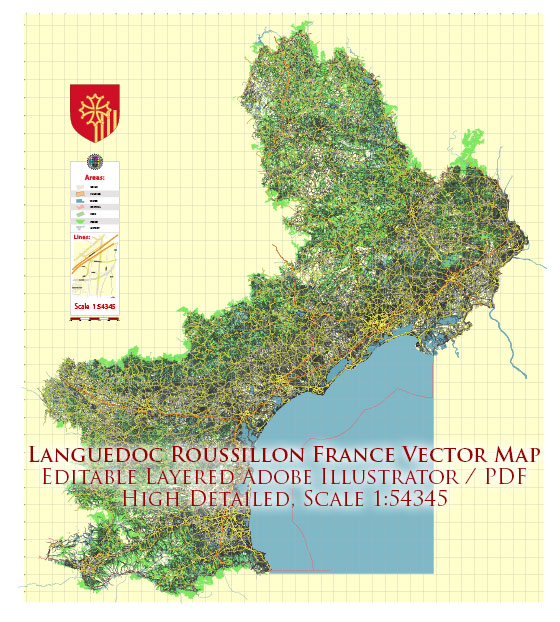Languedoc-Roussillon is a region in southern France. Like the rest of France, Languedoc-Roussillon has a well-developed energy system that includes various sources of energy production, distribution, and consumption. Here are some key aspects of the energy system in Languedoc-Roussillon:
- Electricity Generation: The electricity generation mix in Languedoc-Roussillon includes a combination of nuclear, hydroelectric, renewable energy, and fossil fuel sources. France, in general, has a significant reliance on nuclear power for electricity generation. Hydroelectric power is also prominent in regions with suitable resources, like the Pyrenees. In addition, renewable energy sources, including wind and solar, have been growing in importance due to government incentives and environmental goals.
- Renewable Energy: Languedoc-Roussillon benefits from a Mediterranean climate, making it well-suited for solar energy production. The region has seen substantial growth in solar power installations over the years. Wind energy is also harnessed in the region, primarily in areas with favorable wind conditions.
- Nuclear Energy: France, as a whole, relies heavily on nuclear energy for electricity production. The Languedoc-Roussillon region has some nuclear power plants contributing to the national grid. The specific nuclear facilities in the region may have evolved since my last update.
- Fossil Fuels: While the emphasis is on reducing fossil fuel use, some gas and oil-based power generation facilities may still exist in the region to provide backup power or to meet peak demand.
- Energy Efficiency: Like other regions in France, Languedoc-Roussillon has made efforts to improve energy efficiency in various sectors, including residential, industrial, and transportation. These efforts aim to reduce energy consumption and greenhouse gas emissions.
- Grid Infrastructure: The region is connected to the French national grid, which is managed by the electricity transmission company, RTE (Réseau de Transport d’Électricité). This grid facilitates the distribution of electricity across the country.
- Renewable Energy Projects: Languedoc-Roussillon has supported numerous renewable energy projects, including the construction of solar farms, wind farms, and hydropower installations.
- Energy Policy: France, as a whole, has been focused on transitioning to cleaner and more sustainable energy sources to meet its climate goals. This includes policies to increase the share of renewable energy in the energy mix, reduce greenhouse gas emissions, and improve energy efficiency.
It’s important to note that the energy landscape is dynamic, and energy policies, technologies, and infrastructure can change over time. Therefore, I recommend checking with local and regional authorities for the most up-to-date information on Languedoc-Roussillon’s energy system and related developments.


 Author: Kirill Shrayber, Ph.D.
Author: Kirill Shrayber, Ph.D.